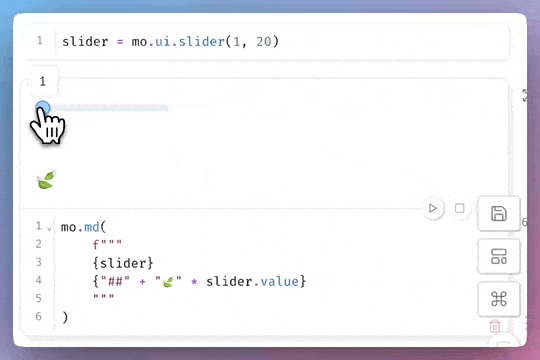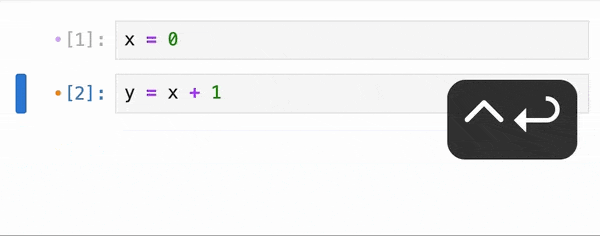Motivation
Interactive data visualizations are essential in data science workflows, allowing analysts and scientists to dynamically explore data and communicate findings effectively.
Working with interactive widgets in traditional notebooks requires complex widget setup, output management, and explicit function definitions for even simple interactions. With Marimo’s reactive notebooks you can effortless create more visualizations helping streamline workflows significantly.
import ipywidgets as widgets
a = widgets.IntSlider(min=1, max=20)
def f(a):
print(f'{"🍃" * a}')
out = widgets.interactive_output(f, {'a': a})
widgets.VBox([widgets.VBox([a]), out])Introduction to marimo
marimo is a reactive notebook that automatically manages dependencies between cells and UI elements, ensuring consistency throughout the notebook.
Installation:
pip install marimoAs covered in the article about reproducible and consistent notebooks, marimo automatically re-runs dependent cells when changes occur. In this post, we will cover its interactive UI elements feature.
Interactive UI elements promote data visualization
marimo simplifies the same leaf visualization with a more intuitive approach:
import marimo as mo
# Simple slider creation
leaves = mo.slider(1, 20)
# Direct output without manual widget management
mo.md(f'{"🍃" * leaves.value}')
Conclusion
marimo’s interactive UI elements provide a more intuitive and maintainable way to create interactive data applications. By automatically handling state changes and dependencies, it eliminates common sources of errors and inconsistencies found in traditional notebook environments.
Reactive Notebooks and easy visualizations are just one way Marimo improves productivity. For a comprehensive breakdown of many of Marimo’s features, check out my main Marimo article here!




